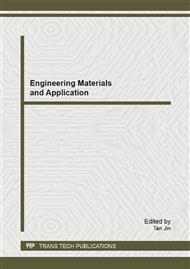p.595
p.601
p.607
p.612
p.619
p.625
p.631
p.635
p.641
Control-Structure Integrated Design of Flexible Spacecraft Using MOEA/D
Abstract:
A framework has been developed to identify control-structure interaction design of flexible space structures that are Pareto optimal with respect to multiple conflicting objectives. The objectives and constraints of multiobjective optimization problem are derived from structure and control performances. The equation of motion of the flexible space structure are based on Lagrange’s equation. Multiobjective evolutionary algorithm based on decomposition (MOEA/D) is employed for optimization. This framework has been applied to a controlled idealized rotating structure to quantify tradeoffs in control-strcutrue design. The control-strcutrue design is optimized based on two conflicting objectives with minimize total mass and minimize control cost using MOEA/D. To solve the equality constraint of the above problem, an improvement is proposed in the implementation of MOEA/D. The improvement is based on the modification of new solution on each step of evolution. The numerical results obtained suggest that the MOEA/D and its improvement have the potential of practical applicability.
Info:
Periodical:
Pages:
619-624
Citation:
Online since:
January 2013
Authors:
Price:
Сopyright:
© 2013 Trans Tech Publications Ltd. All Rights Reserved
Share:
Citation:


